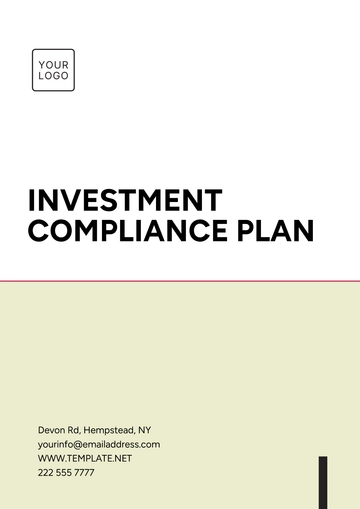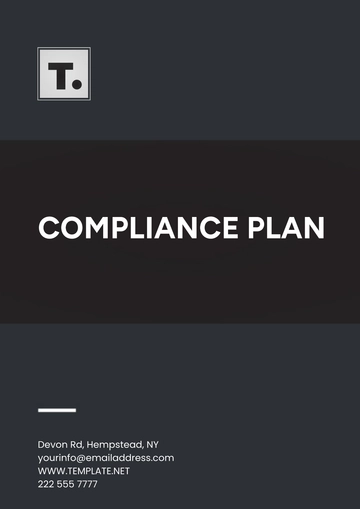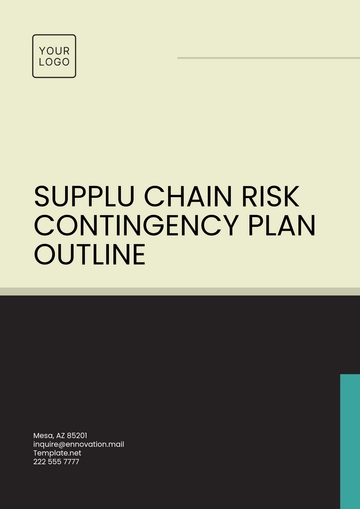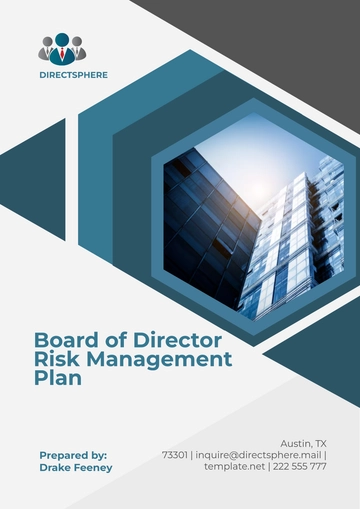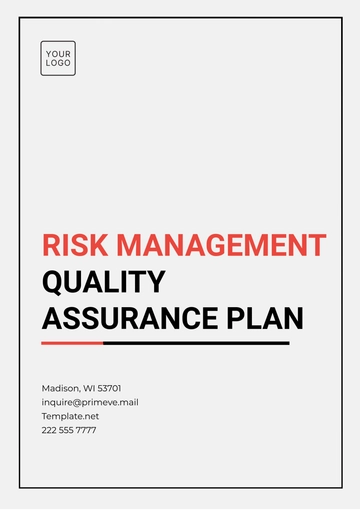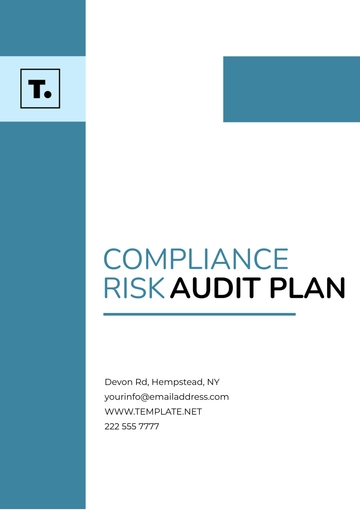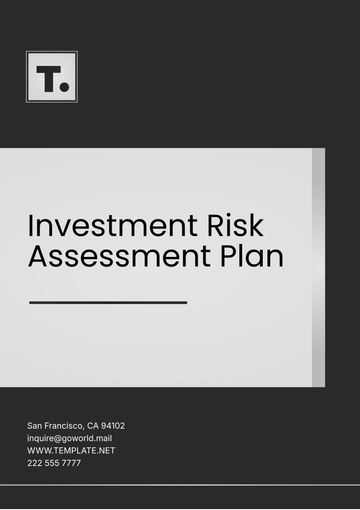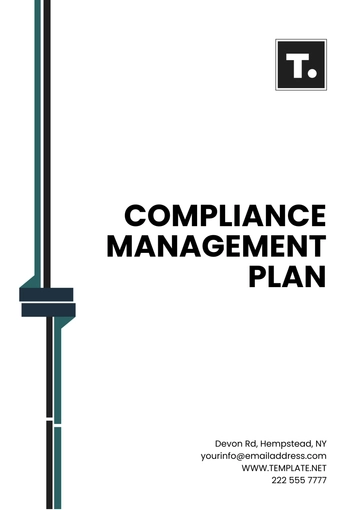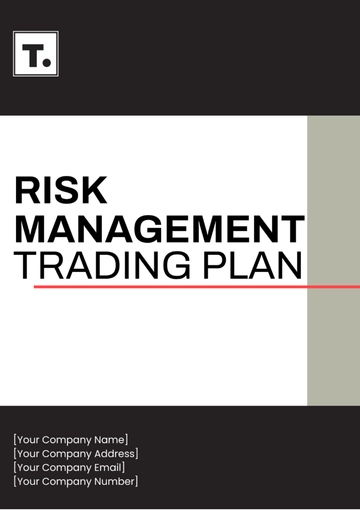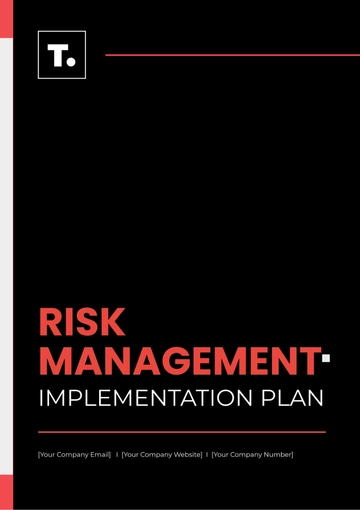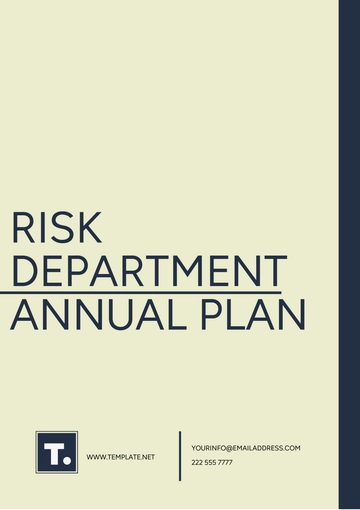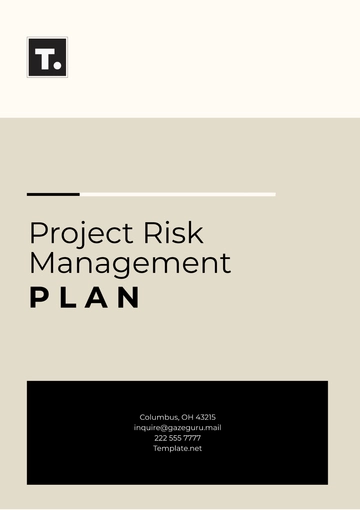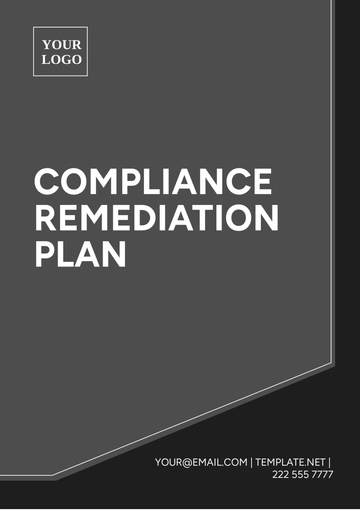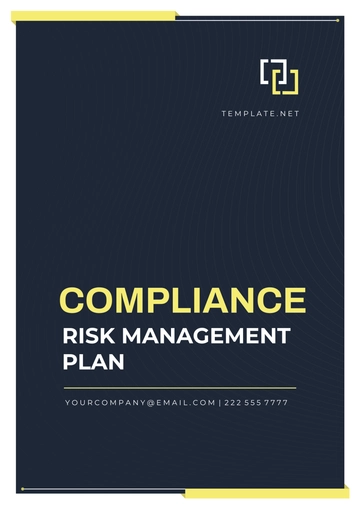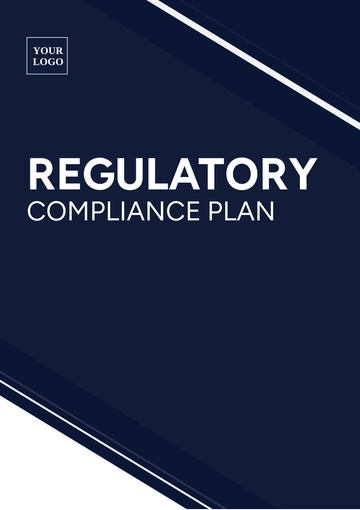Free Financial Risk Restructuring Plan
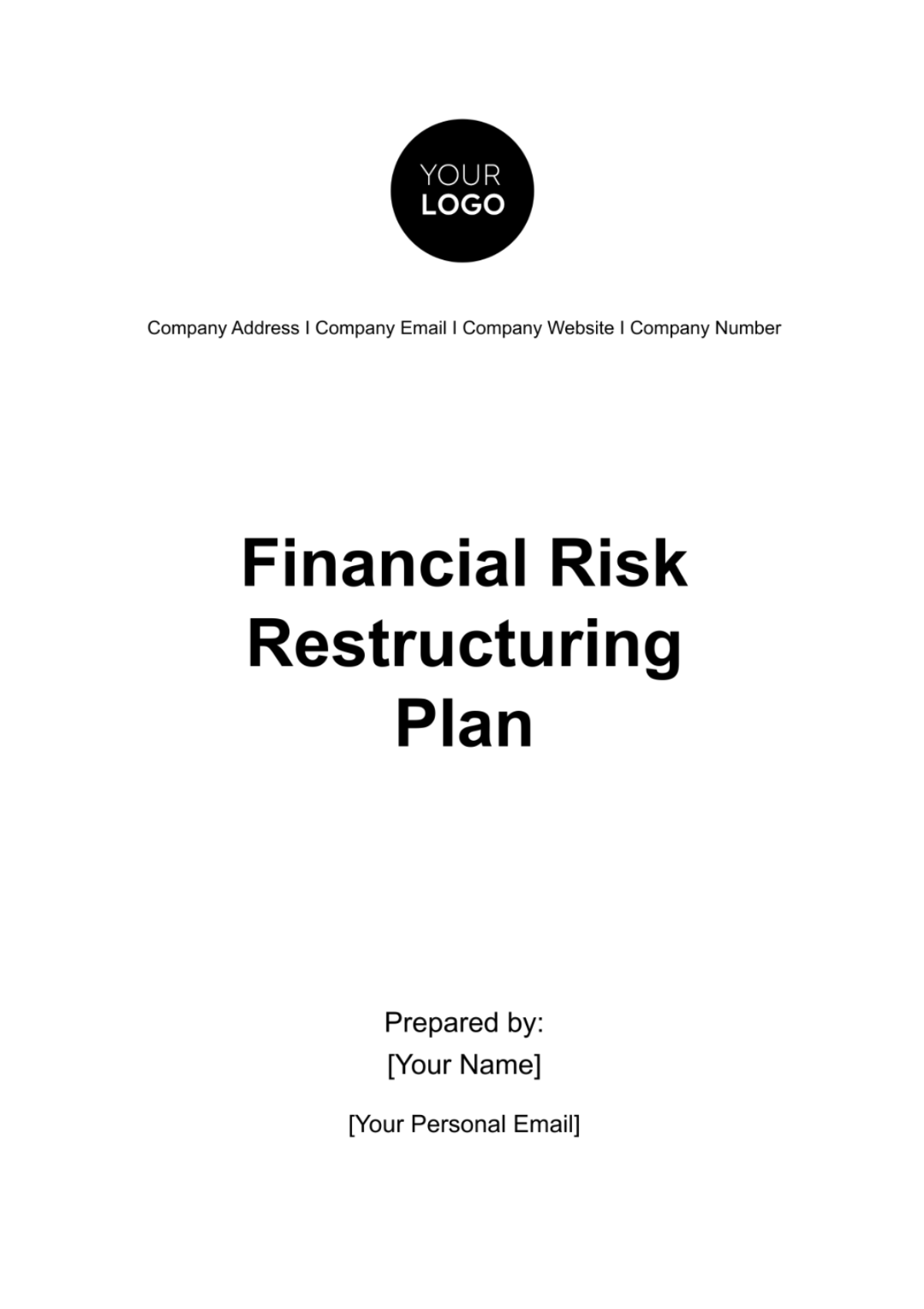
Executive Summary
A. Overview
In response to dynamic market conditions and evolving financial landscapes, [Your Company Name] has developed this Financial Risk Restructuring Plan. The primary objective is to fortify the company's financial position, mitigate risks, and ensure sustained growth. Through a strategic approach, we aim to enhance financial stability, optimize capital utilization, and navigate challenges effectively.
B. Objectives
The overarching goals of this plan include:
Reducing the current debt burden of [$8 million] by [$5 million] within the next [3] years.
Optimizing the capital structure to increase equity ratios, with a target of achieving a debt-to-equity ratio of [0.5].
Diversifying revenue streams to reduce dependency on specific market segments, aiming for a [$20 million] increase in revenue from new markets.
C. Anticipated Outcomes
The successful implementation of this plan is anticipated to yield:
Improved creditworthiness, resulting in a projected reduction of [$3 million] in annual interest expenses.
Increased shareholder value through optimized capital allocation, targeting a [$2 million] increase in shareholder equity.
Enhanced resilience against market volatility, with a projected [$1 million] reduction in the impact of external economic downturns.
Introduction
A. Background
Against the backdrop of industry-specific challenges, regulatory changes, and global economic uncertainties, [Your Company Name] recognizes the imperative to proactively address financial risks. The need for a structured restructuring plan arises from a comprehensive analysis of market trends, internal financial performance, and a forward-looking assessment of potential risks.
B. Market Context
The [industry] is currently undergoing transformative changes, driven by specific changes such as technological advancements, shifts in consumer behavior, and regulatory updates. These developments have reshaped the competitive landscape and introduced new challenges and opportunities. In response to these dynamics, [Your Company Name] recognizes the imperative to proactively address financial risks and position itself strategically within the evolving market.
C. Regulatory Landscape
In the face of evolving regulatory requirements, particularly GDPR, Dodd-Frank Act, or industry-specific standards, it becomes paramount for [Your Company Name] to ensure compliance while optimizing financial structures. The regulatory landscape is continuously evolving, demanding a proactive approach to align financial strategies with legal and ethical obligations. To ensure that regulatory considerations are seamlessly integrated into the restructuring plan, [Your Company Name] collaborates closely with legal and compliance experts. The plan's actions and strategies are meticulously crafted to align with legal requirements and industry standards.
Risk Assessment
A. Identification
To comprehensively identify potential financial risks, [Your Company Name] employs a multifaceted approach. This includes analyzing historical data, assessing market trends, and conducting scenario analyses. Common risk categories include market volatility, interest rate fluctuations, and industry-specific challenges such as technological disruptions or geopolitical events. By identifying these risks, [Your Company Name] is equipped to proactively address potential threats to financial stability.
B. Quantification
Quantifying identified risks is pivotal for strategic decision-making. For example, a [$10 million] market downturn could result in a [43%] decrease in revenue, impacting overall profitability. [Your Company Name] utilizes sophisticated financial modeling to assign specific values and probabilities to potential risk scenarios. This quantitative approach enables the prioritization of risks based on their potential financial impact, allowing for targeted mitigation strategies.
C. Mitigation Strategies
Following the identification and quantification of risks, [Your Company Name] formulates robust mitigation strategies. This may involve implementing hedging mechanisms to manage market risks, negotiating favorable terms with suppliers to alleviate cost pressures, or diversifying product/service offerings to reduce dependency on a specific market segment. These strategies are designed to enhance [Your Company Name]'s resilience and ensure proactive risk management.
Restructuring Objectives
A. Goal Definition
The restructuring plan is rooted in clearly defined and measurable objectives. [Your Company Name] aims to achieve a [$45 million] reduction in overall debt within the next [3] years. This reduction is strategically aligned with improving key financial ratios, including the debt-to-equity ratio. The overarching goal is to establish a more sustainable and agile financial structure that positions [Your Company Name] for long-term success.
B. Priority Setting
Prioritizing restructuring goals involves a systematic approach based on urgency and potential impact. In the initial phase, [Your Company Name] will focus on reducing high-interest debt to alleviate immediate financial pressure. Subsequent phases will address strategic efforts to optimize the capital structure, which may include refinancing at favorable terms or exploring equity injections. This phased approach ensures a well-organized and effective implementation of the restructuring plan.
C. Milestones and Timelines
To ensure accountability and progress tracking, [Your Company Name] establishes specific milestones and timelines for each restructuring objective. For instance, reducing high-interest debt by [$12 million] within the first [12] months. This ensures a clear roadmap for implementation, allowing for timely adjustments and demonstrating progress to stakeholders.
Strategies and Tactics
A. Debt Management
To address identified financial risks, [Your Company Name] adopts a multifaceted approach to debt management. Negotiating with lenders to secure more favorable interest rates is a primary tactic, aiming for a reduction of [12%] in interest expenses over the next [12] months. Additionally, exploring opportunities for debt refinancing is pursued to capitalize on market conditions and achieve a more sustainable debt structure. [Your Company Name] employs financial modeling to project the impact of these strategies on overall debt and interest payments.
B. Capital Optimization
The capital optimization strategy encompasses various tactics to enhance financial flexibility and improve equity ratios. [Your Company Name] considers injecting additional equity to strengthen the company's financial position, targeting an increase of [$20 million] in shareholder equity within the next [18] months. Share buybacks are explored as a means to efficiently deploy excess capital, optimizing the balance between debt and equity. These actions are strategically aligned with achieving a targeted debt-to-equity ratio of [0.4].
C. Revenue Diversification
To reduce reliance on specific market segments, [Your Company Name] implements a comprehensive revenue diversification strategy. This involves introducing innovative products or services to capture new market opportunities. Entering untapped markets and strengthening strategic partnerships are also key elements. A detailed market analysis guides the identification of potential growth areas, and financial projections estimate the impact on revenue. The goal is to achieve a [$31 million] increase in revenue from new markets within the next [24] months.
Implementation Plan
A. Timeline
The implementation plan is structured in a phased approach to ensure a systematic and efficient execution of the restructuring strategies. In the initial [6] months, the focus is on debt management, including renegotiating terms and reducing high-interest debt. The subsequent [12] months involve capital optimization efforts, such as equity injections and share buybacks. The final [18] months concentrate on revenue diversification. This timeline aligns with the prioritization of objectives and provides a clear roadmap for achievement.
B. Resource Allocation
Resource allocation is critical for successful implementation. [Your Company Name] identifies and allocates human, financial, and technological resources for each phase of the plan. A dedicated cross-functional team is assembled, financial resources are secured, and technological tools are employed for efficient monitoring and analysis. This comprehensive resource allocation ensures that the plan's execution remains on track.
C. Communication Plan
A transparent communication plan is developed to keep stakeholders informed throughout the implementation process. Regular updates, town hall meetings, and detailed progress reports are scheduled. Stakeholder concerns are actively addressed, and feedback is incorporated into decision-making. This open communication approach fosters trust and ensures that all stakeholders are aligned with the strategic direction of [Your Company Name].
D. Risk Mitigation During Implementation
Risk mitigation is integrated into the implementation plan to address potential challenges effectively. Regular risk assessments are conducted, and contingency plans are established for unforeseen obstacles. An iterative review process allows for adaptability, ensuring that the restructuring plan remains responsive to evolving market conditions. By incorporating risk mitigation strategies, [Your Company Name] safeguards the successful execution of the plan.
Monitoring and Evaluation
A. Key Performance Indicators (KPIs)
Establishing Key Performance Indicators (KPIs) is paramount for tracking the success of the restructuring plan. [Your Company Name] identifies and monitors key metrics, including:
Debt-to-equity ratio: Targeting a reduction to [0.4] within [24] months.
Interest coverage ratio: Aiming for a [20%] improvement within [18] months.
Profitability metrics: Targeting a [15%] increase in net profit margin within [24] months.
Regularly tracking these KPIs allows [Your Company Name] to assess the effectiveness of implemented strategies and make informed adjustments as needed.
B. Contingency Planning
In anticipation of potential challenges, [Your Company Name] develops comprehensive contingency plans. These plans outline alternative strategies and actions to be taken in the event that initial tactics prove less effective than anticipated. This proactive approach ensures adaptability in the face of unforeseen circumstances and maintains the agility of the restructuring plan.
Reporting and Documentation
A. Reporting Structure
To ensure transparency and accountability, [Your Company Name] establishes a robust reporting structure. Regular reports are generated, detailing progress against set KPIs, milestones achieved, and any adjustments made to the plan. The reporting structure includes:
Monthly financial reports.
Quarterly progress reports to stakeholders.
Annual comprehensive restructuring plan reviews.
This structured reporting approach facilitates effective communication and keeps stakeholders well-informed throughout the implementation process.
B. Compliance
Considering regulatory and legal considerations, [Your Company Name] integrates compliance measures into the restructuring plan. All actions and strategies are aligned with relevant regulations, ensuring adherence to industry standards. Compliance checks are conducted regularly to confirm that the restructuring plan remains within legal boundaries.
C. Lessons Learned
As part of the documentation process, [Your Company Name] incorporates a "lessons learned" section. This captures insights gained during the implementation of the restructuring plan. This knowledge-sharing mechanism allows for continuous improvement, enabling [Your Company Name] to refine strategies for future initiatives.
D. Continuous Improvement
The restructuring plan is viewed as a dynamic document, subject to continuous improvement. Regular reviews and feedback sessions are conducted to identify areas for enhancement. [Your Company Name] remains agile, adapting strategies based on evolving market conditions and internal performance evaluations.
Conclusion
A. Summary
[Your Company Name] embarks on this Financial Risk Restructuring Plan with a commitment to fortify financial stability and position the company for sustainable growth. The plan, rooted in comprehensive risk assessment and strategic objectives, outlines a roadmap for achieving key milestones. As [Your Company Name] navigates the complexities of the market, this plan serves as a dynamic tool to enhance resilience, optimize financial structures, and embrace opportunities for positive transformation.
B. Acknowledgment
[Your Company Name] acknowledges the collective effort of its teams, stakeholders, and partners in shaping and implementing this restructuring plan. The dedication and collaborative spirit exhibited by all involved parties contribute significantly to the plan's success.
C. Future Outlook
Looking ahead, [Your Company Name] remains committed to continuous improvement and adaptation. The lessons learned from this restructuring initiative will inform future strategies, ensuring agility in responding to evolving market dynamics. The company embraces change as a catalyst for innovation and growth, and this Financial Risk Restructuring Plan lays the foundation for a resilient and prosperous future.
- 100% Customizable, free editor
- Access 1 Million+ Templates, photo’s & graphics
- Download or share as a template
- Click and replace photos, graphics, text, backgrounds
- Resize, crop, AI write & more
- Access advanced editor
Mitigate financial risks with the Financial Risk Restructuring Plan Template on Template.net. This editable and customizable plan simplifies the restructuring process. Tailor content effortlessly using our Ai Editor Tool, ensuring adaptability and precision. Elevate your risk management with this user-friendly template, offering a comprehensive approach to crafting personalized restructuring plans for effective financial stability.
You may also like
- Finance Plan
- Construction Plan
- Sales Plan
- Development Plan
- Career Plan
- Budget Plan
- HR Plan
- Education Plan
- Transition Plan
- Work Plan
- Training Plan
- Communication Plan
- Operation Plan
- Health And Safety Plan
- Strategy Plan
- Professional Development Plan
- Advertising Plan
- Risk Management Plan
- Restaurant Plan
- School Plan
- Nursing Home Patient Care Plan
- Nursing Care Plan
- Plan Event
- Startup Plan
- Social Media Plan
- Staffing Plan
- Annual Plan
- Content Plan
- Payment Plan
- Implementation Plan
- Hotel Plan
- Workout Plan
- Accounting Plan
- Campaign Plan
- Essay Plan
- 30 60 90 Day Plan
- Research Plan
- Recruitment Plan
- 90 Day Plan
- Quarterly Plan
- Emergency Plan
- 5 Year Plan
- Gym Plan
- Personal Plan
- IT and Software Plan
- Treatment Plan
- Real Estate Plan
- Law Firm Plan
- Healthcare Plan
- Improvement Plan
- Media Plan
- 5 Year Business Plan
- Learning Plan
- Marketing Campaign Plan
- Travel Agency Plan
- Cleaning Services Plan
- Interior Design Plan
- Performance Plan
- PR Plan
- Birth Plan
- Life Plan
- SEO Plan
- Disaster Recovery Plan
- Continuity Plan
- Launch Plan
- Legal Plan
- Behavior Plan
- Performance Improvement Plan
- Salon Plan
- Security Plan
- Security Management Plan
- Employee Development Plan
- Quality Plan
- Service Improvement Plan
- Growth Plan
- Incident Response Plan
- Basketball Plan
- Emergency Action Plan
- Product Launch Plan
- Spa Plan
- Employee Training Plan
- Data Analysis Plan
- Employee Action Plan
- Territory Plan
- Audit Plan
- Classroom Plan
- Activity Plan
- Parenting Plan
- Care Plan
- Project Execution Plan
- Exercise Plan
- Internship Plan
- Software Development Plan
- Continuous Improvement Plan
- Leave Plan
- 90 Day Sales Plan
- Advertising Agency Plan
- Employee Transition Plan
- Smart Action Plan
- Workplace Safety Plan
- Behavior Change Plan
- Contingency Plan
- Continuity of Operations Plan
- Health Plan
- Quality Control Plan
- Self Plan
- Sports Development Plan
- Change Management Plan
- Ecommerce Plan
- Personal Financial Plan
- Process Improvement Plan
- 30-60-90 Day Sales Plan
- Crisis Management Plan
- Engagement Plan
- Execution Plan
- Pandemic Plan
- Quality Assurance Plan
- Service Continuity Plan
- Agile Project Plan
- Fundraising Plan
- Job Transition Plan
- Asset Maintenance Plan
- Maintenance Plan
- Software Test Plan
- Staff Training and Development Plan
- 3 Year Plan
- Brand Activation Plan
- Release Plan
- Resource Plan
- Risk Mitigation Plan
- Teacher Plan
- 30 60 90 Day Plan for New Manager
- Food Safety Plan
- Food Truck Plan
- Hiring Plan
- Quality Management Plan
- Wellness Plan
- Behavior Intervention Plan
- Bonus Plan
- Investment Plan
- Maternity Leave Plan
- Pandemic Response Plan
- Succession Planning
- Coaching Plan
- Configuration Management Plan
- Remote Work Plan
- Self Care Plan
- Teaching Plan
- 100-Day Plan
- HACCP Plan
- Student Plan
- Sustainability Plan
- 30 60 90 Day Plan for Interview
- Access Plan
- Site Specific Safety Plan



